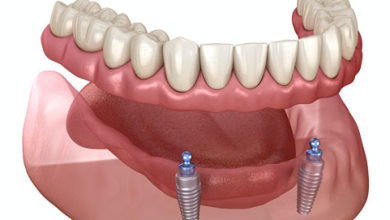Traditional Implant vs. Immediate Implant

In-Depth Analysis of Traditional Implant Technology
Traditional implant dentistry, a timeless classic in dental restoration, follows a meticulous and comprehensive process. It begins with a precise surgical extraction of damaged or irreparable teeth, paving the way for subsequent treatments. Patients are then advised to patiently wait for approximately three months, allowing the extraction site to heal thoroughly and creating an optimal oral environment for implant placement. During this phase, it’s crucial to avoid factors that might hinder healing, such as infections or improper oral hygiene. At Chinese Dental Laboratory, we strictly adhere to international standards, ensuring precision and quality in every step, from the base to the crown.
Once the wound has fully healed, the dentist proceeds with the implant surgery. The implant, serving as an artificial tooth root, undergoes rigorous selection and design, considering its material, design, and positioning to achieve stable osseointegration with the surrounding bone tissue. The subsequent 3 to 4 months mark the crucial bone integration period, where patients must diligently follow post-operative instructions and attend necessary follow-ups to foster implant stability.
Ultimately, when the implant achieves an ideal union with the bone, the dentist customizes and affixes a crown, completing the implant procedure. Traditional implants boast a broad application spectrum, accommodating single, multiple, half-arch, and full-arch tooth loss. Furthermore, once stabilized, they offer long-lasting functionality and resistance to loosening or inflammation, restoring oral health over the long term.
However, traditional implants do have limitations, notably their relatively lengthy treatment duration, requiring patience and cooperation from patients. In specific cases, such as poor bone quality or certain health conditions, alternative solutions may be necessary.
Innovation and Challenges of Immediate Implant Technology
Immediate implant technology revolutionizes traditional implantology by shorten the treatment timeline and simplifying surgical procedures. With this approach, patients can have an implant placed immediately after tooth extraction, eliminating the lengthy waiting period of traditional implants. This swift restoration accelerates oral function recovery and alleviates patients’ psychological burdens.
Nonetheless, immediate implants impose stricter requirements on bone quality and patient health. Given the inherent mismatch between the tooth socket and implant dimensions, securing initial stability poses a technical challenge. Moreover, immediate implants necessitate heightened surgical skills and extensive clinical experience to navigate potential complexities. Recognizing this market demand, China Dental Lab adopts internationally advanced implant materials and techniques, offering personalized and precise implant solutions tailored to each patient’s needs.
In conclusion, both traditional and immediate implant technologies have their unique strengths and applicability. Patients should carefully consider their individual circumstances and consult with professionals to select the optimal treatment path for optimal outcomes.




